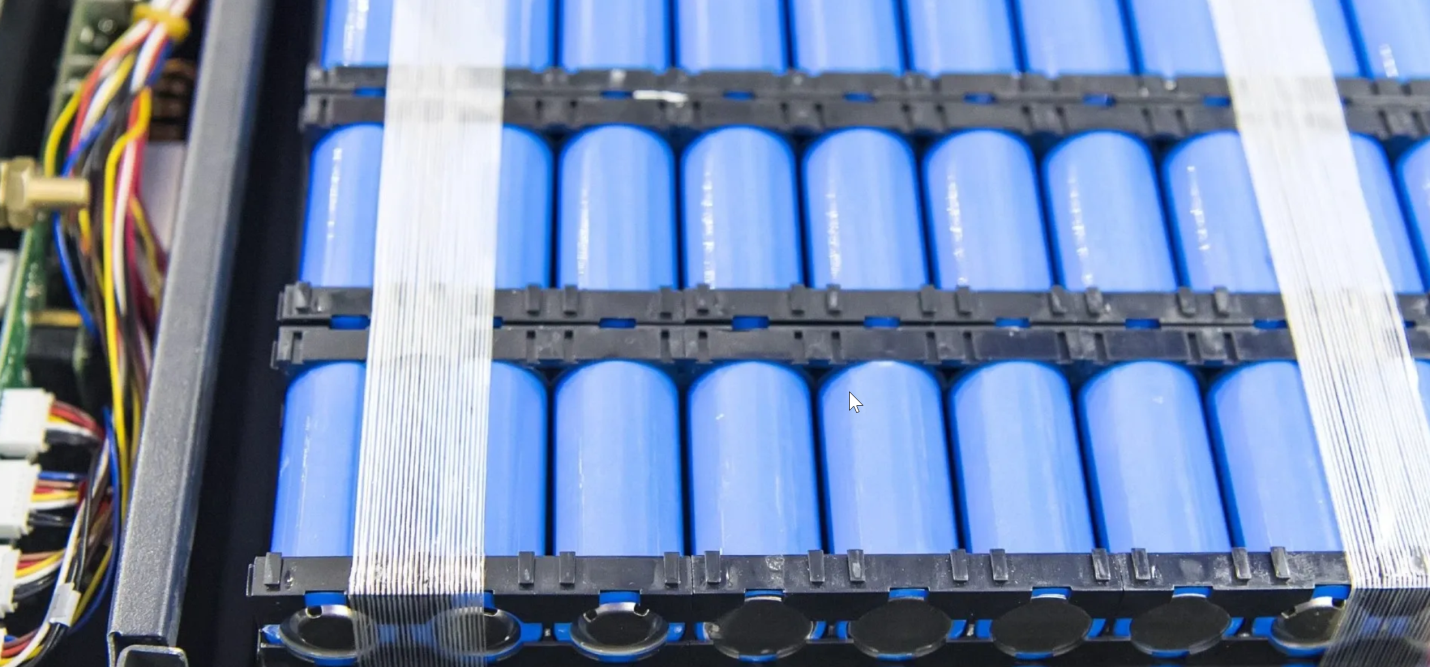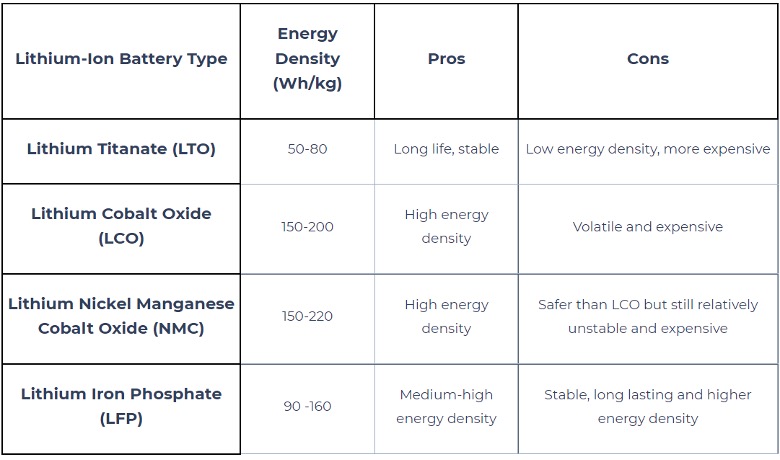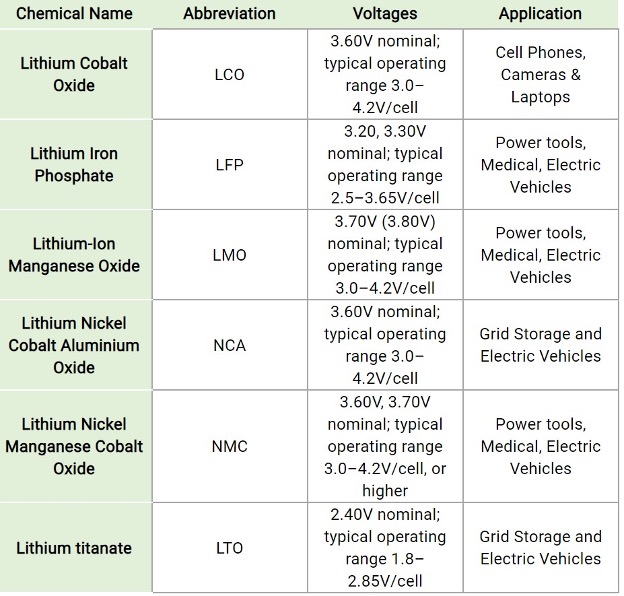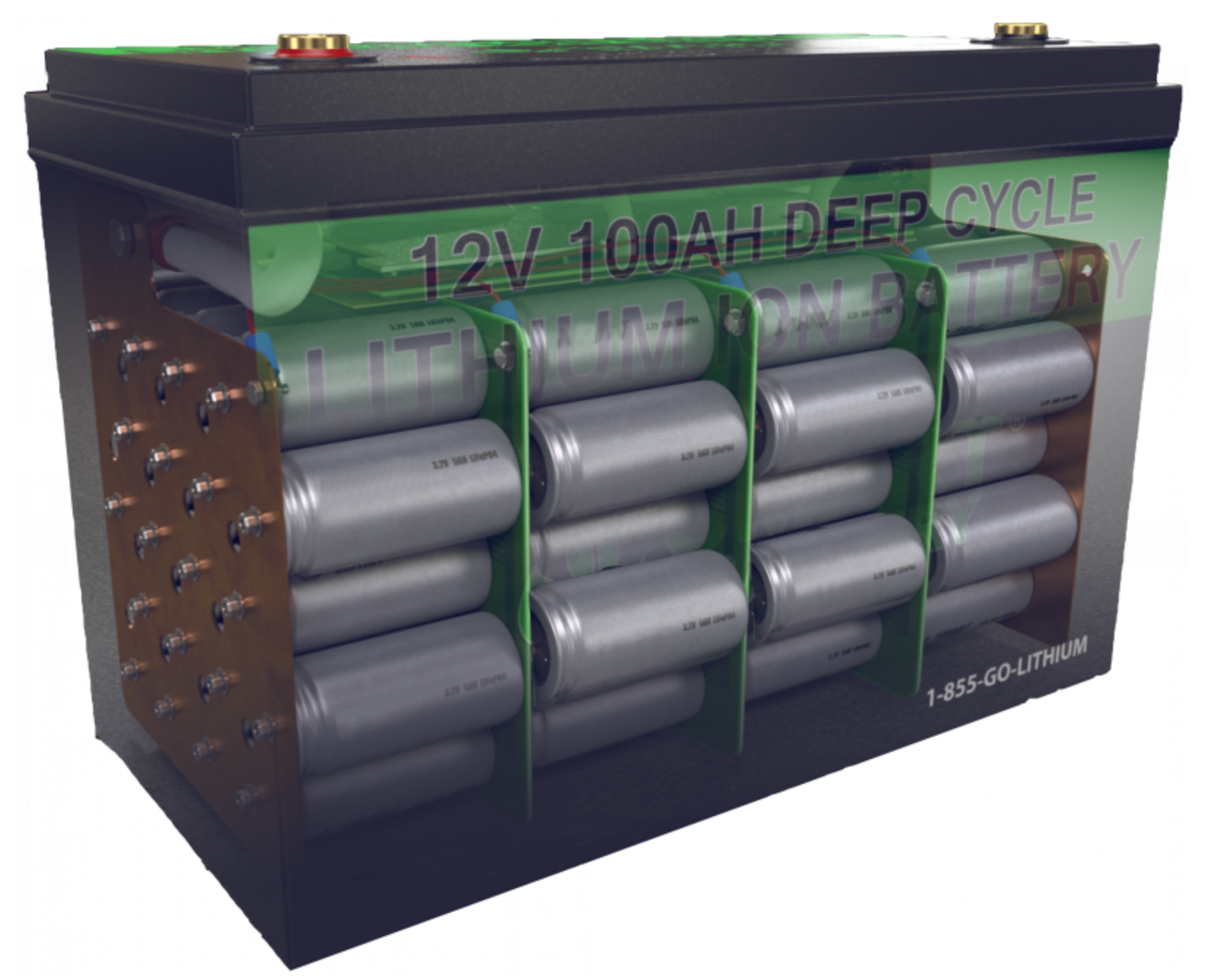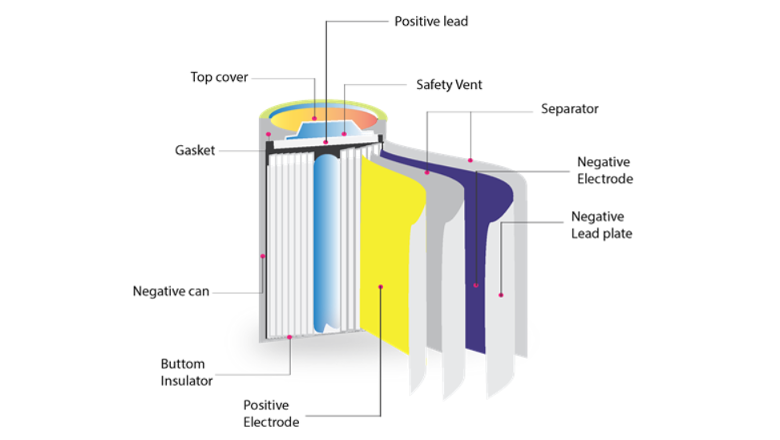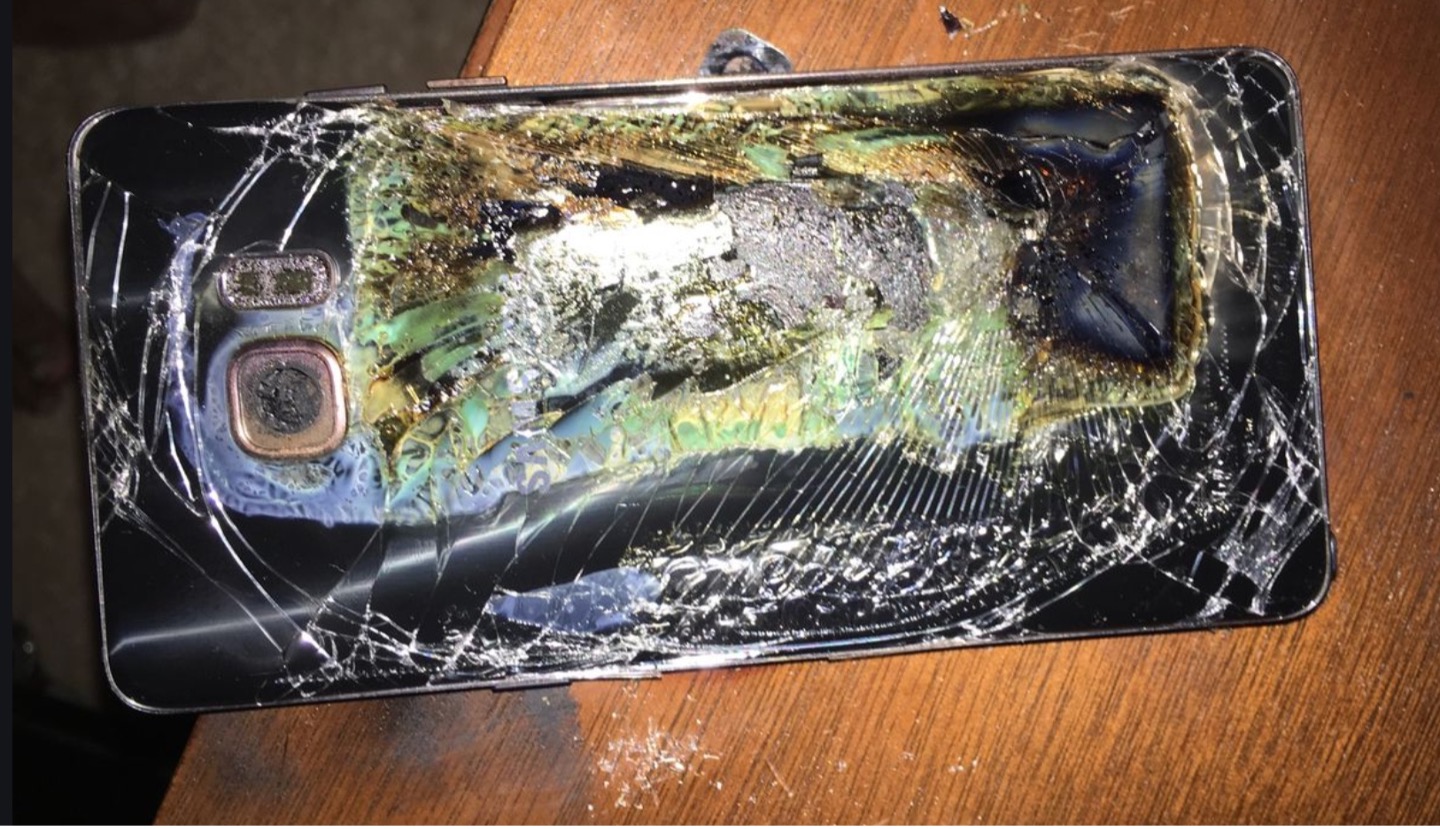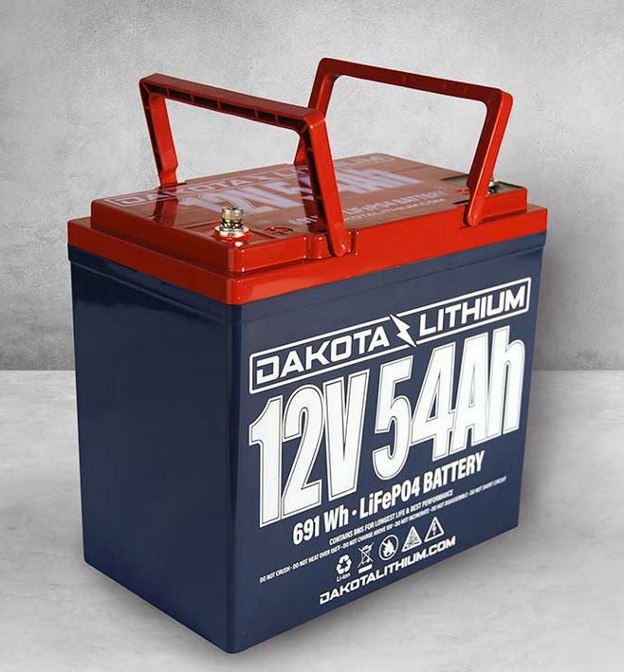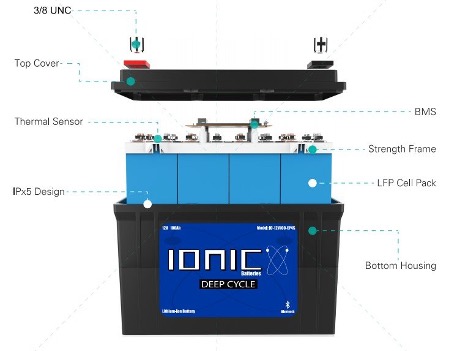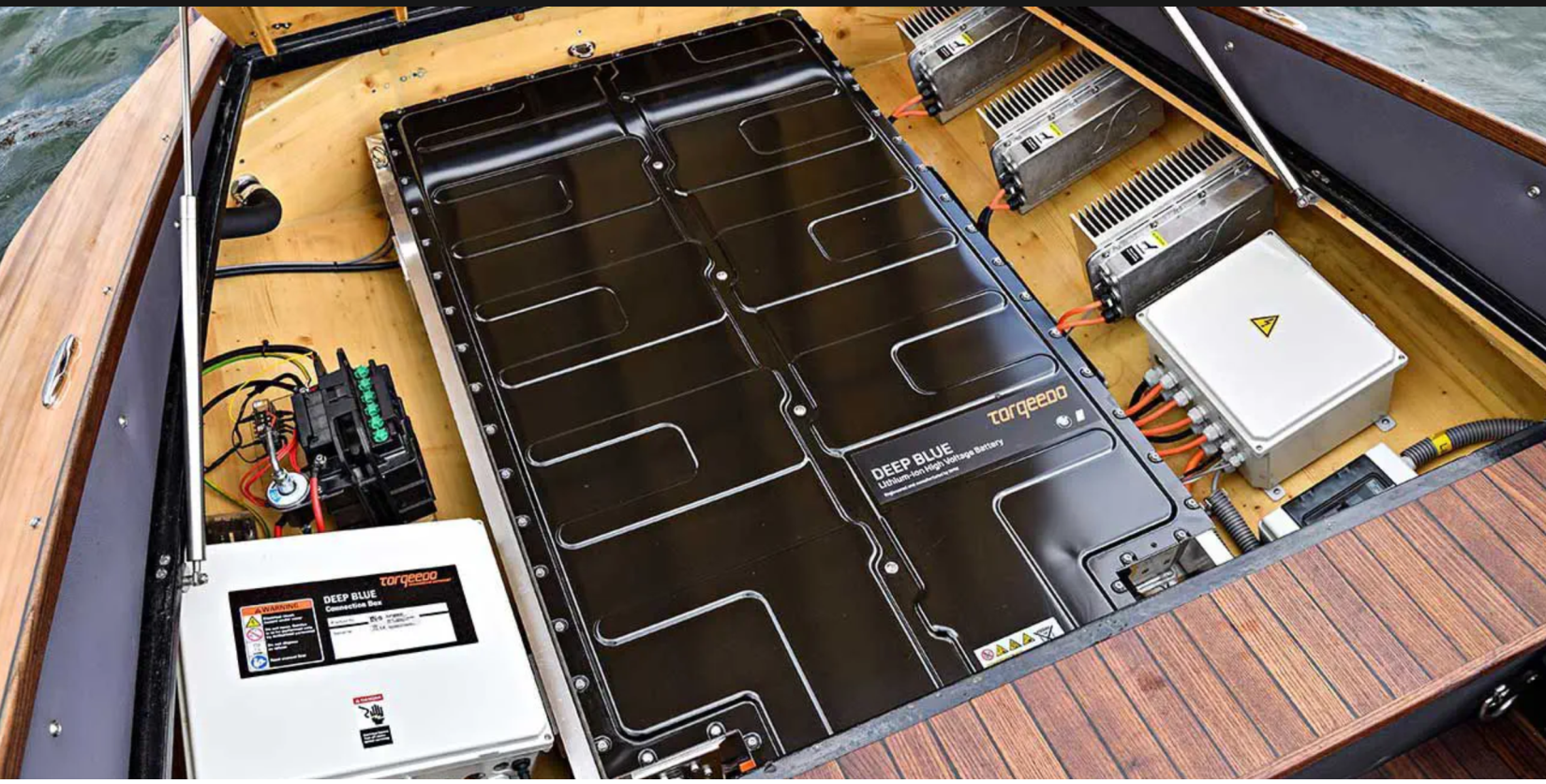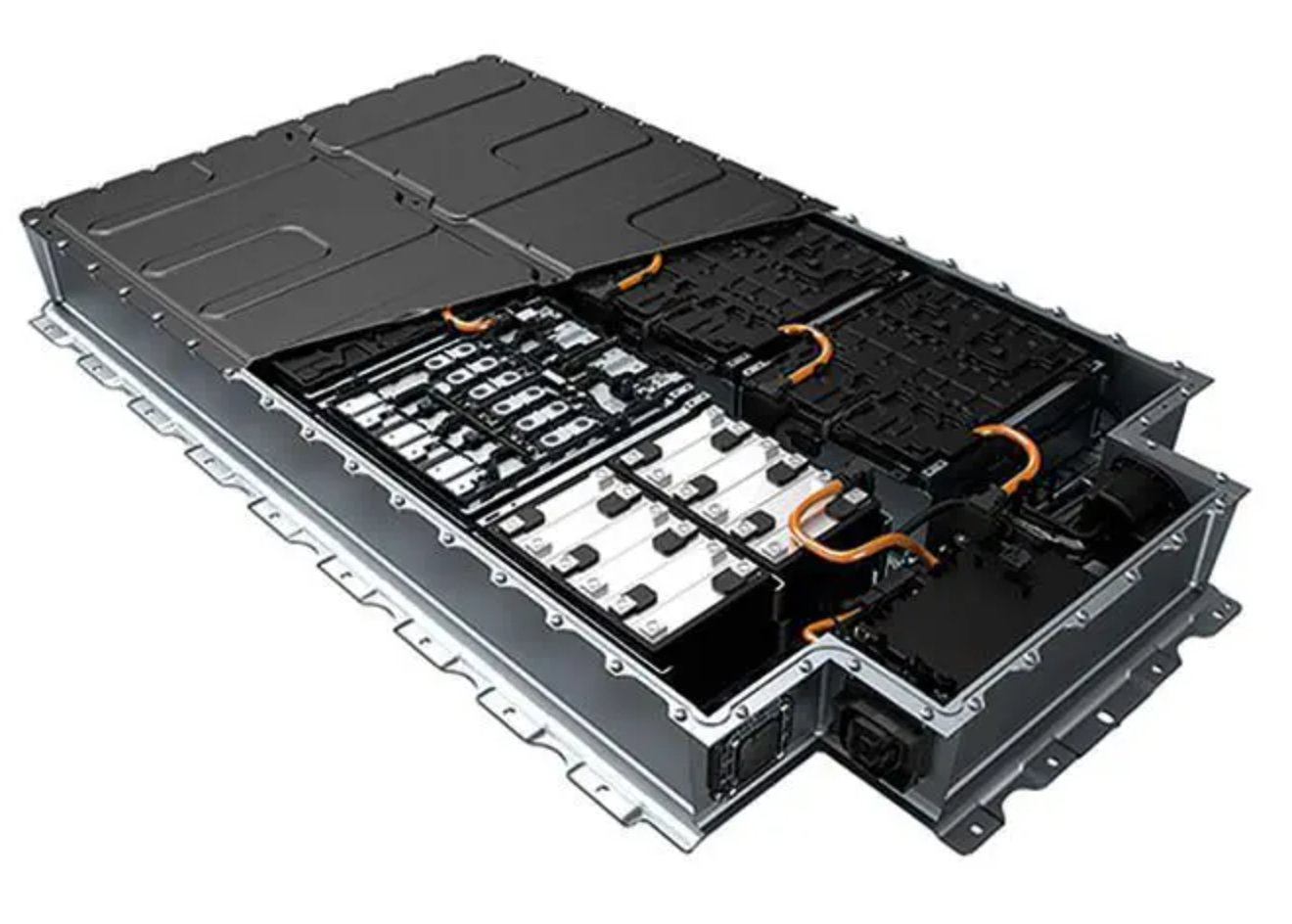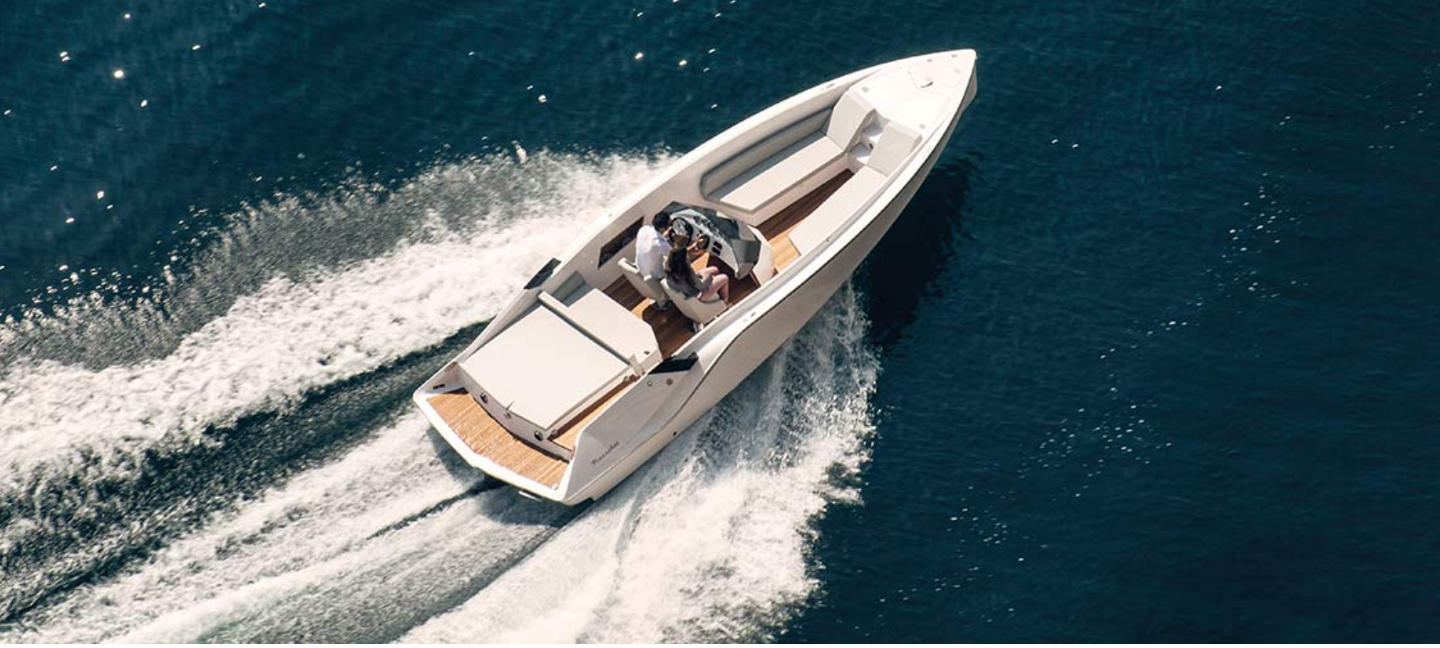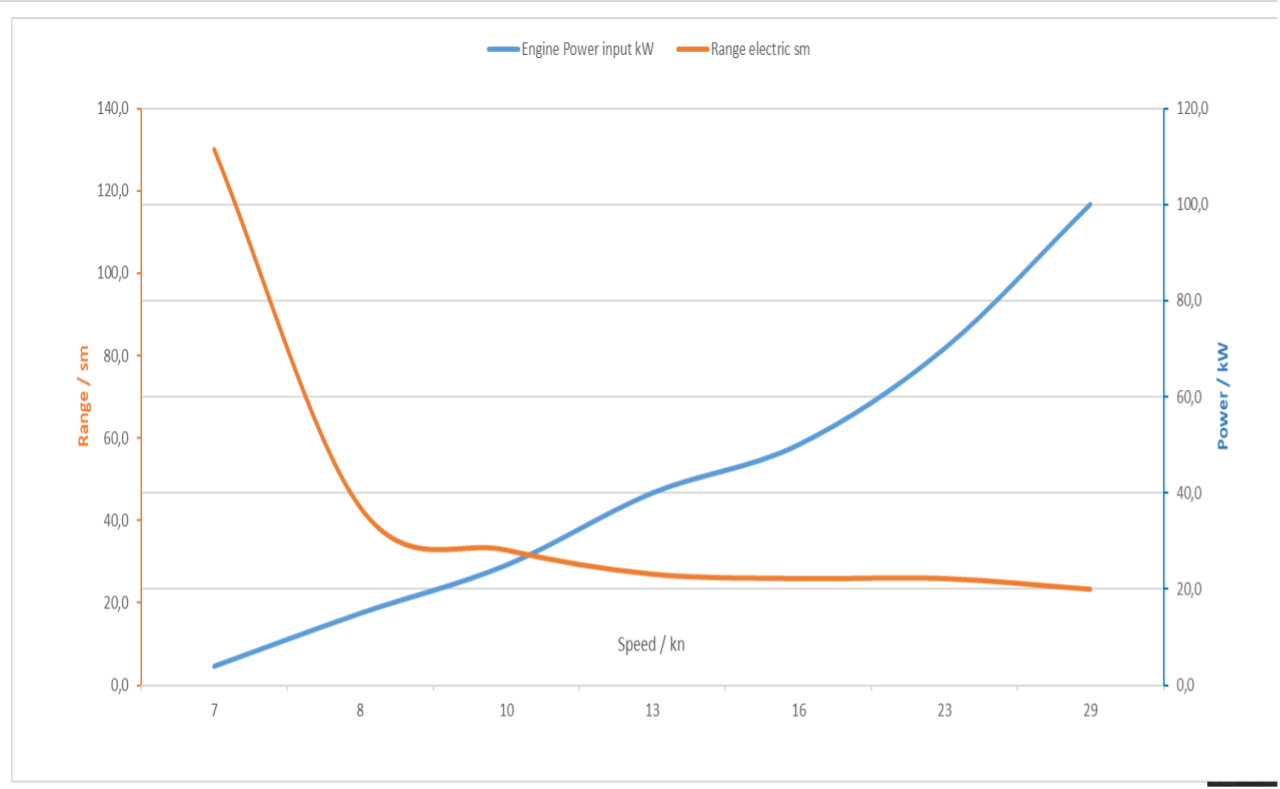Welcome to the New World of Lithium-ion Marine Batteries
In 1991 Sony introduced the first commercial lithium-ion battery, and since that time they have revolutionized communications, most notably in smart phones, but also in laptops among thousands of other uses. In 2008 Elon Musk introduced Tesla’s Roadster which was powered by Lithium-ion batteries made with nickel and cobalt because they were the most energy-dense battery chemistry available.
Lithium-ion batteries in their marine incarnation are now ubiquitous at boat shows in dozens of different brand names. A typical 12V 100Ah lithium-ion battery costs from $900 to $1400, depending on the brand, type and sophistication of its BMS controller. Prices have already come down, and that trend is likely to continue as companies switch from batteries containing nickel and cobalt to less-costly lithium iron phosphate (LFP), something that Tesla is already doing on its cheaper models.
Sometime in the next couple of years there will be a lithium-ion battery in your future, so now’s the time to find out what they are all about.
The New Age of Lithium-ion Batteries
The new kids on the block are lithium-ion batteries, which have the following advantages—
- Contain an energy density per kilogram of up to seven times more than conventional lead-acid battery
- Weigh half as much
- Charge about five times faster
- Last four times longer, typically 10 years or even more
Energy density is the measure of how much energy a battery contains in proportion to its weight. This measurement is typically presented in Watt-hours per kilogram (Wh/kg). A watt-hour is a measure of electrical energy that is equivalent to the consumption of one watt for one hour.
Lithium-ion batteries come in six different chemical compositions. As can be seen below, five of the six chemical variations are used in powering electric motors in vehicles.
Lithium batteries should not be confused with lithium-ion batteries. These batteries are “primary cell” batteries, which means they cannot be recharged once empty. They are ideal for powering devices where long battery life is imperative. Examples include watches, film cameras, pacemakers, hearing aids, remote controls, flashlights, calculators, and smoke detectors. Obviously, they are not appropriate for powering electric motors in boats, or as house batteries.
Lithium-ion Batteries
Lithium-ion batteries are “secondary cells”, meaning that they can be recharged and reused. These batteries are incredibly popular today, and our everyday lives would be quite different without them. Your laptop, cell phone, tablet, and camera all depend on lithium-ion batteries to keep them working, as these rechargeable batteries are highly effective. The electrodes of lithium-ion batteries are made from lithium and carbon, making them much lighter in weight than other rechargeable batteries.
Lithium-ion batteries are also great at holding their charge, losing only around 1 to 5% of their power every month they aren’t used. Another benefit of lithium-ion batteries is that they have no memory effect. Remember being told that you need to completely discharge your batteries before plugging them in to recharge? That doesn’t apply to lithium-ion batteries. These excellent rechargeable batteries can handle being charged and emptied hundreds of times before deteriorating.
Lithium-ion batteries are quite complex in nature, unlike the simplicity of a plain old lithium battery. Within a lithium-ion battery, you will find multiple lithium-ion cells which store and provide the power. However, Li-ion batteries have other components, too.
A small computer within the battery—a battery management system or BMS--monitors and regulates the temperature, voltage, and the state of battery charge, all from within the unit. This tiny system is necessary to keep your battery functioning as it should and is also responsible for the 5% power loss per month these rechargeable batteries experience.
A lithium-ion polymer (LiPo) battery (also known as Li-poly, lithium-poly, PLiON, and other names) is a rechargeable Li-ion battery with a polymer electrolyte in the liquid electrolyte used in conventional Li-ion batteries. There are a variety of LiPo chemistries available. All use a high conductivity gel polymer as the electrolyte. LiPos provide higher specific energies than other lithium-ion batteries, often used in systems where weight is an important factor, such as mobile devices, drones, and some electric vehicles.
Lithium-ion Battery Failures
Normal use and charging of a rechargeable lithium-ion batteries creates heat. This heat usually dissipates harmlessly. However, if something goes wrong, the battery creates heat faster than it can shed it, and this can turn into what’s called a “thermal runaway.” The increased heat damages internal components, which in turn creates more heat and pressure. This can continue until there is a critical failure.
In such a case, the battery can vent, spraying hot electrolyte through a tiny hole or literally explode, tearing the battery apart and shooting out its contents. The extremely hot materials coming out of the battery may ignite nearby materials. Hot chemicals and shrapnel from a venting or exploding battery may cause severe injuries. The electrolytes from a failing lithium-ion battery can reach 1000°F (538°C). Cobalt in the powder form is highly flammable under certain conditions.
Indeed, there have been a number of high-profile cases of lithium-ion batteries catching on fire, such as with the Samsung 7 smart phones which were recalled, the four incidents of smoking lithium-ion batteries in the cockpits of Boeing 737s, as well as recalls by Dell and others of millions of laptop computers and other lithium-ion-powered devices early in these batteries’ usage.
When we talked to lithium-ion battery makers, this danger is clearly uppermost on their minds and virtually all have designed systems to control heat, and shut the systems down, if all else fails.
Better Performance – Higher Cost
No matter what the chemistry, lithium-ion batteries start at around $1000 list price for a 100 Ah deep-cycle model—though with careful shopping you may find some deals for less. For many applications, there are some pretty amazing advantages in lithium-ion power.
One Application for Lithium-ion Batteries
If you’re putting together a flats or bay boat where you’re likely to be carrying three deep-discharge batteries to power a 36-volt trolling motor plus one or two starting batteries for your V6 outboard, the weight savings can be enough to significantly impact the performance of the boat. It will plane more easily, run in shallower water safely and use less fuel. To say nothing of the fact that you’ll never have to stick your head down in the bilge to add water to the cells—the batteries become pretty much a permanent part of the boat, given the length of time most of us own the same boat.
Battery Management System (BMS)
Most lithium-ion batteries also include a battery management system built in, another reason for their high cost. The management system will monitor over-voltage, under-voltage, over-current, over-temperature, short circuit, and cell imbalance. It will disconnect the battery from the circuit if any of these events occur, protecting your investment.
Some, like those from Ionic, allow you to tap into the battery via an app and monitor it with your smart-phone. You can even get models that self-heat for cold climates, making charging faster.
Because of their light weight, manufacturers can pack three 12-volt lithium-ion packs into a single case to create a 36-volt battery that you can carry aboard with ease—a big plus for powering 36-volt trolling motors or electric outboards. And, lithium-ion batteries discharge when not in use at only 1 to 5 percent per month in most conditions, unlike conventional batteries which lose up to 30 percent of their power each month when not recharged.
For trolling motors, lithium-ion batteries’ ability to put out full rated power for extended periods means improved power, important when fishing high current areas or working against strong winds. And, they put out full power until they’re fully discharged—there’s no gradual decline as with lead acid. This is good in that you get longer full run time—but also bad if you don’t keep an eye on the battery meter because the battery will suddenly stop working without warning.
Putting ICE on Ice
Internal combustion engines (ICE) are going the way of the dinosaur in the next decade or so. The immediate replacement will be hybrid diesel/electric solutions, or gas/electric systems, or even all-electric propulsion -- but ultimately ICE engines are toast.
Currently, for main electric propulsion motors, large battery banks must be constructed to house the number of batteries necessary to power the electric motor sufficiently for reasonable utility. The BMW Deep Blue 40 kW battery seen above and below is used by Torqueedo to power its electric inboard motor. It is about half the size of the lithium-ion battery in the Tesla Model 3, which has an EPA rating of 80.5 kW.
The dayboat seen above is powered by a 100kW Torqeedo motor designed for fast, planing powerboats. The direct drive motor at 2500 RPM delivers torque of 390 Nm (Newton meters), or 287.6 ft. lbs. This is equivalent to from 134-hp to 137-hp.
The above chart published on the Torqeedo’s website graphically records the performance of the boat’s performance with the 100kW motor and the 40kWh battery pack. Top speed was 29 knots (33.37 mph). Like WOT with an ICE engine, we imagine that most operators of an electric boat would choose not to run the boat there for long.
“Best cruise” appears to be at 7 knots (8 mph), where the boat has a range of 130 statute miles and an endurance of about 16 hours. Typically boats of this type have a minimum planing speed of about 17 mph, so it appears that the boat at that speed has a range of about 50 statute miles, and an endurance of about 3 hours. This is typical of the performance that BoatTEST has been finding in this size and type of boats powered by electric motors.
Consumer Caveat
New battery technology is being developed as you read this and most battery makers we have spoken with say that within the next few years, batteries will be available that have up to 80% more energy density than the ones on the market today. Just last month, Tesla announced that it is switching to iron phosphate lithium-ion batteries from the more expensive and greater energy density nickel-cobalt batteries. While Tesla may be doing this to lower its costs, there are other forces working against batteries using cobalt.
The demand for cobalt is expected to be greater than the supply in 2025, raising its price. Further, China has all but cornered the market on raw cobalt in the Democratic Republic of the Congo, which accounts for 70% of the world’s known deposits of the mineral.
In addition to child exploitation, other issues surrounding the use of cobalt in batteries, such as environmental damage, to say nothing of human damage (cobalt is a carcinogen), caused by its extraction are likely to become widely known.
Currently, the famous American brand names using cobalt are pleading ignorance of the modern version of King Leopold’s exploitation in the eastern Congo, but all of that could change if public opinion is mobilized.
Change is in the Wind
Tesla’s primary battery supplier, the Chinese government-backed CATL, is developing sodium-ion chemistry as a substitute for nickel and cobalt in lithium-ion batteries. Sony is working on other chemical technology and claims its new lithium-sulfur batteries will have 40% higher energy density and lower production costs than today’s lithium-ion batteries.
However, currently there are issues with this technology, as the electrodes degrade too fast for commercial applications at present. However, a number of institutions are working on a solution for this stumbling block. Lithium-sulfur might be a halfway-house replacement for lithium-ion, rather than a radical successor, but it is on the way and it will be a significant improvement, according to experts in the field.
By Frank Sargent and Jeff Hammond for BoatTEST
